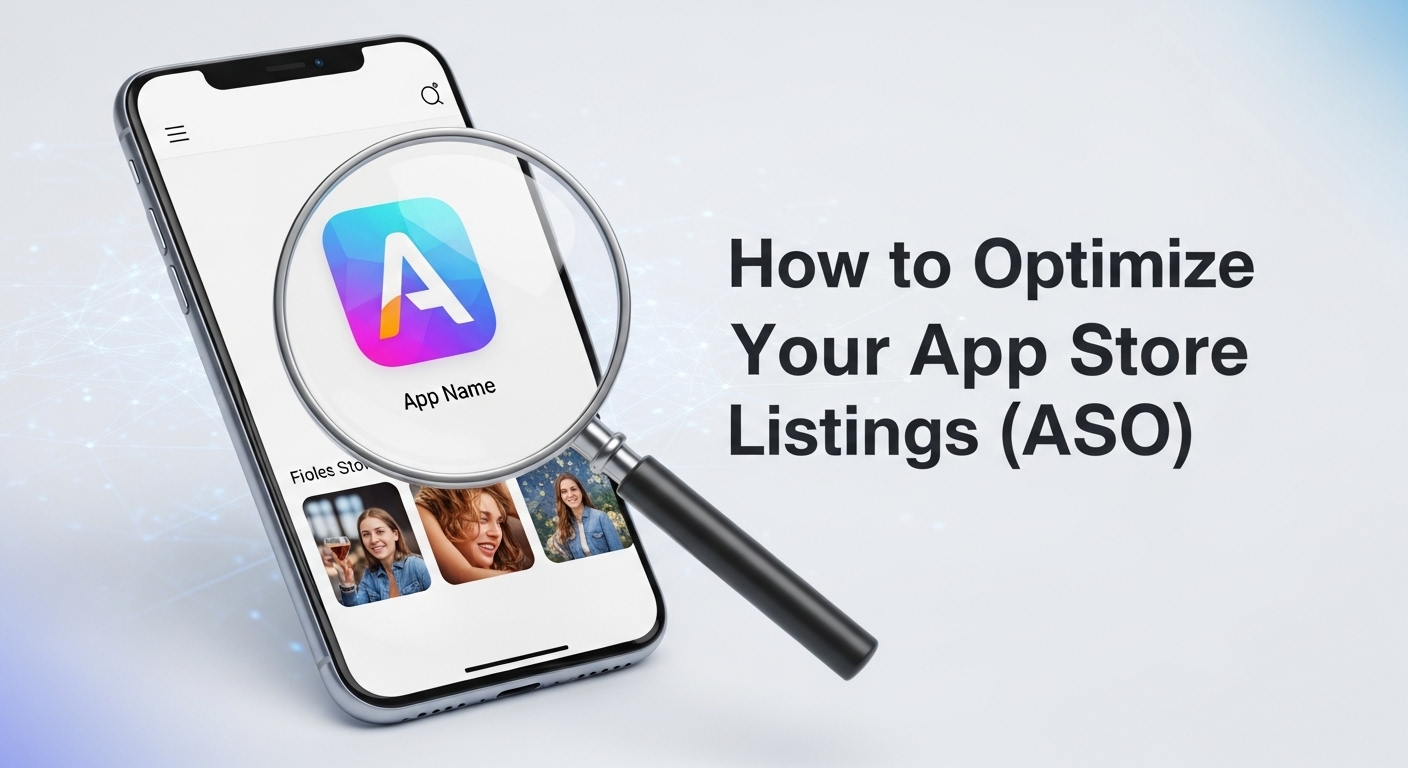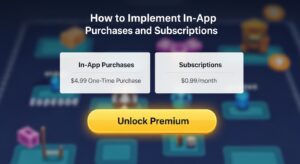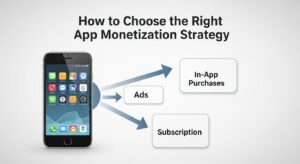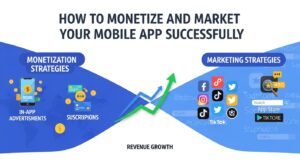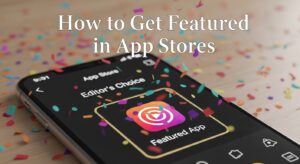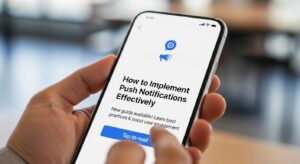App store optimization has become the cornerstone of mobile app success in today’s competitive digital landscape. With over 2.87 million apps on Google Play Store and 1.96 million on Apple’s App Store, standing out requires more than just a great product, it demands strategic app store optimization.
Think about this: when was the last time you scrolled past the first few search results when looking for an app? Most users don’t venture beyond the top 10 results, making app store optimization crucial for visibility and downloads.
But here’s where many developers stumble: they approach app store optimization like traditional SEO, missing the unique nuances that make ASO fundamentally different. Before we dive into the strategies, let me ask you, what do you think is the most critical factor that influences an app’s ranking in store searches?
What Makes App Store Optimization Unique
App store optimization operates on different principles than web-based SEO. While both focus on improving visibility, the ranking factors and user behaviors vary significantly.
- Key Difference #1: User Intent When someone searches for an app, they’re typically ready to download immediately. This creates a different optimization challenge compared to web searches where users might be browsing for information.
- Key Difference #2: Conversion Signals App stores heavily weight download rates, user ratings, and retention metrics in their algorithms—factors that don’t exist in traditional search.
Strategy 1: Mastering Title and Subtitle Optimization
Your app’s title serves as the most powerful ranking factor for app store optimization. But here’s the nuance many miss—it’s not just about cramming keywords.
The Title Formula That Works
For iOS Apps:
- Primary keyword + Brand name + Value proposition
- Example: “Meditation App – Calm Mind | Daily Mindfulness & Sleep Stories”
For Android Apps:
- Leverage the full 50-character limit
- Include your most important keyword near the beginning
Subtitle Strategy
Think of your subtitle as an expansion of your value proposition. How would you explain your app’s core benefit in one compelling sentence? This is where secondary app store optimization keywords naturally fit.
Platform | Character Limit | Best Practice |
iOS Subtitle | 30 characters | Focus on key features |
Android Short Description | 80 characters | Include primary keyword + benefit |
Strategy 2: Crafting Descriptions That Convert and Rank
Your app description serves dual purposes in app store optimization: convincing users to download while signaling relevance to store algorithms.
The Psychology-Driven Structure
Rather than listing features, structure your description around user transformation:
- Hook (First 2-3 lines): Address the user’s primary pain point
- Solution (Next paragraph): How your app solves this specific problem
- Benefits (Middle section): Concrete outcomes users can expect
- Social Proof (Near end): Ratings, downloads, or testimonials
- Call-to-Action (Final line): Clear next step
Here’s a critical question for reflection: when you read app descriptions, what makes you scroll down versus immediately deciding to download or skip?
Long-tail Keyword Integration
Instead of forcing keywords unnaturally, weave them into benefit-focused statements:
- Poor: “Our app has great app store optimization features”
- Better: “Boost your mobile app ranking with proven strategies used by top developers”
Strategy 3: Visual Assets That Maximize Conversion
App store optimization extends far beyond text—your visual elements often determine whether users convert after finding your app.
Screenshot Optimization Framework
Your screenshots should tell a story in this sequence:
- Screenshot 1: Core value proposition in action
- Screenshot 2: Key feature solving main user problem
- Screenshot 3: Secondary feature or social proof
- Screenshot 4-5: Additional features or use cases
Consider this: if users only saw your first screenshot, would they understand exactly what your app does and why they need it?
Icon Design Psychology
Your app icon influences both click-through rates and perceived quality. Research from App Annie shows that icons with clear, recognizable symbols perform 23% better than abstract designs.
Icon Best Practices:
- Use contrasting colors that stand out on both light and dark backgrounds
- Ensure clarity at 29×29 pixel size (smallest iOS display)
- Test different variations using A/B testing tools like SplitMetrics
Strategy 4: Advanced Keyword Research and Implementation
Effective app store optimization requires understanding not just what keywords to target, but how users actually search within app stores.
The Three-Tier Keyword Strategy
Tier 1: Head Terms (High volume, high competition)
- Target in title and subtitle only
- Examples: “fitness app,” “photo editor”
Tier 2: Body Terms (Medium volume, moderate competition)
- Include in description and metadata
- Examples: “workout tracking app,” “professional photo editing”
Tier 3: Long-tail Terms (Lower volume, high intent)
- Weave naturally throughout description
- Examples: “beginner bodyweight workout tracker,” “RAW photo editing for iPhone”
Competitor Analysis Framework
Rather than simply copying competitor keywords, analyze the gaps:
- Identify top 5 competitors in your category
- Extract their primary keywords using tools like Sensor Tower
- Find keywords they’re missing but would be relevant
- Test these gap keywords in your own app store optimization strategy
What patterns do you notice when you analyze the top apps in your category? Are they all targeting similar keywords, or do you see opportunities they’re missing?
Strategy 5: Leveraging Reviews and Ratings for Algorithm Boost
User-generated content significantly impacts app store optimization rankings, but managing reviews requires a strategic approach.
The Review Generation System
Instead of simply asking for reviews, create trigger points based on user behavior:
Timing Triggers:
- After completing their first successful action
- Following a positive in-app experience
- Before they might encounter a potential friction point
Personalization Strategy: Customize review requests based on user segments:
- Power users: Ask for detailed reviews highlighting specific features
- Casual users: Simple rating request with minimal friction
- Advocates: Encourage sharing on social platforms
Responding to Reviews for ASO Benefits
Your responses to reviews serve multiple app store optimization purposes:
- Algorithm Signal: Active engagement indicates a maintained app
- Conversion Factor: Prospective users read your responses
- Keyword Opportunity: Naturally include relevant terms in responses
Measuring and Iterating Your App Store Optimization Strategy
Success in app store optimization requires continuous measurement and refinement. But which metrics actually matter for long-term growth?
Primary KPIs to Track
Metric | Why It Matters | Target Benchmark |
Keyword Rankings | Direct visibility impact | Top 10 for primary keywords |
Conversion Rate | Download efficiency | 15-30% for most categories |
Retention Rates | Algorithm ranking factor | Day 1: 25%+, Day 7: 15%+ |
Secondary Indicators
- Search impression share: How often you appear vs. competitors
- Category ranking: Position within your app category
- Review velocity: Rate of new reviews (positive signal to algorithms)
A/B Testing Your ASO Elements
Successful app store optimization requires systematic testing:
Testing Priority Order:
- Icon (highest impact on click-through rate)
- Screenshots (major conversion factor)
- Title variations (ranking and conversion impact)
- Description (conversion optimization)
Tools like StoreMaven allow you to test different asset combinations and measure their impact on conversion rates.
Advanced App Store Optimization Tactics for 2025
As app stores evolve their algorithms, staying ahead requires understanding emerging trends and tactics.
Localization as a Growth Multiplier
App store optimization isn’t just about English keywords. Localizing your app for different markets can dramatically increase your addressable audience.
Localization Priority Framework:
- High-opportunity markets: Countries with growing smartphone adoption
- Low-competition languages: Markets where fewer apps are properly localized
- Cultural adaptation: Beyond translation to cultural relevance
Consider this strategic question: if you could only localize for three additional markets, which would provide the best return on your app store optimization investment?
Seasonal and Trending Keywords
Smart app store optimization includes anticipating and capitalizing on trending searches:
- Seasonal patterns: Fitness apps peak in January, travel apps in summer
- Current events: News apps during major events, productivity apps during work-from-home surges
- Platform updates: Apps that leverage new OS features often get algorithmic boosts
Cross-Platform ASO Considerations
Optimizing for both iOS and Android requires understanding their fundamental differences:
iOS App Store Specifics:
- Subtitle field provides additional keyword real estate
- Editorial features can dramatically boost downloads
- Privacy labels now influence user decisions
Google Play Store Differences:
- Short and full description serve different purposes
- Developer name affects search rankings
- Google Play Console provides more detailed ASO analytics
Common App Store Optimization Mistakes to Avoid
Learning from others’ mistakes accelerates your app store optimization success. Here are the most costly errors I see developers make:
Mistake 1: Keyword Stuffing
- The Problem: Cramming unnatural keywords reduces both user experience and algorithm trust.
- The Solution: Focus on natural language that serves users first, algorithms second.
Mistake 2: Neglecting Visual Hierarchy
- The Problem: Screenshots that don’t guide the eye or tell a clear story.
- The Solution: Use consistent design elements and progressive disclosure of features.
Mistake 3: Set-and-Forget Mentality
- The Problem: App store optimization requires ongoing attention as algorithms and competition evolve.
- The Solution: Schedule monthly ASO audits and quarterly strategy reviews.
Mistake 4: Ignoring Platform-Specific Best Practices
- The Problem: Using identical approaches for iOS and Android despite different user behaviors.
- The Solution: Customize your app store optimization strategy for each platform’s unique characteristics.
Building Your App Store Optimization Action Plan
Now that we’ve covered the strategies, how will you implement them systematically?
Week 1-2: Foundation Setup
- [ ] Complete keyword research using the three-tier approach
- [ ] Audit current title, subtitle, and description
- [ ] Analyze top 5 competitors’ app store optimization strategies
Week 3-4: Implementation Phase
- [ ] Update title and subtitle with primary keywords
- [ ] Rewrite description using the psychology-driven structure
- [ ] Prepare new screenshot designs
Month 2: Testing and Optimization
- [ ] Launch A/B tests for visual elements
- [ ] Monitor ranking changes for target keywords
- [ ] Implement review generation system
Ongoing: Measurement and Iteration
- [ ] Weekly ranking checks
- [ ] Monthly conversion rate analysis
- [ ] Quarterly strategy review and updates
Tools and Resources for App Store Optimization Success
To accelerate your app store optimization efforts, leverage these proven tools:
Essential ASO Tools
- App Store Connect: Official iOS analytics and optimization platform
- Google Play Console: Android’s official developer dashboard
- Sensor Tower: Comprehensive keyword research and competitor analysis
- App Annie: Market intelligence and app performance tracking
Design and Testing Resources
- Figma: Creating and iterating on visual assets
- Canva: Quick screenshot and icon design templates
- Unsplash: High-quality images for app screenshots
Conclusion
App store optimization represents one of the highest-ROI marketing strategies available to app developers. Unlike paid advertising, the visibility you build through strategic ASO continues generating downloads long after you’ve implemented the changes.
The key to app store optimization success lies not in any single tactic, but in the systematic application of multiple strategies working together. Your title draws users in, your screenshots convince them to download, your description reinforces their decision, and your ongoing optimization keeps you competitive.

